"Root material is very versatile and can be grown in multiple ways using different templates. I'm using only wheatgrass at the moment but there are roughly 11,000 grass varieties, each with their different properties," says Zena Holloway, the bio-designer behind Rootfull.
Rootfull is a UK-based material innovation company that is developing a novel textile by guiding plant roots through templates to create unique weave patterns, which are then incorporated into artisanal jewelry, clothing, and decor. Rootfull's pioneer, Zena, has worked as an underwater photographer for 25 years, using her craft to demonstrate the impacts of pollution in the world's waterways.
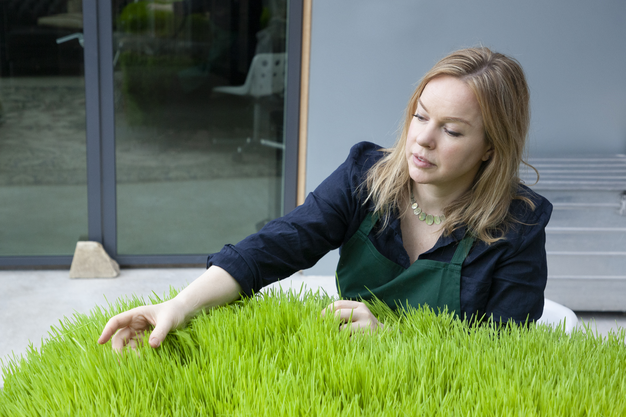
Zena Holloway (Photo credits: Rootfull)
"It stood out to me that we can use biology to develop new materials. The narrative seemed so rich, so I decided to give it a go in 2018," explains Zena. "I grow wheatgrass on a beeswax template and have full control over the growth. I see this as an opportunity to work with farmers to make use of roots in other materials."
While much of her work has focused on wheatgrass as a biomass source, Zena explains that she is interested in collaborating with growers to find other suitable crops, such as tomatoes. "If anyone has extensive root waste that is isolated and not inside a growing media, I would be interested in hearing from them. Any root that is fast growing, strong, and matting well has the potential to become textile," says Zena.
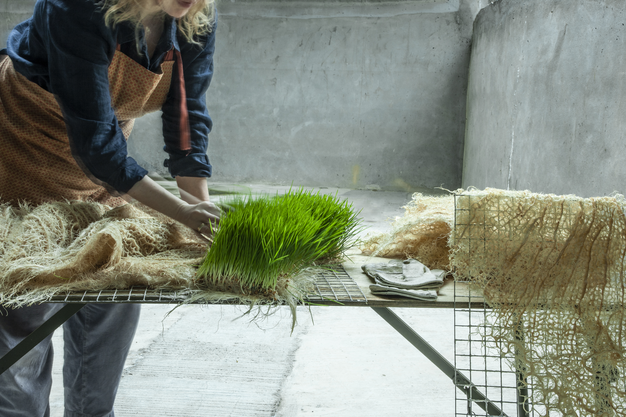
The 'harvesting' of the material (Photo credits: Rootfull)
From fodder mats to art
Sowed on templates of beeswax, Zena cultivates the sprouts from her living room, where, with minimum inputs, they're held for two weeks. When harvested, the edible part goes to her chickens, and the rest will be used for one of her many artworks. Left with beautifully nestled root works in the fodder mats, Zena works her magic. Producing 8m2 of material every two weeks, Zena could reach about 50m2 if she maximizes all inputs, yet currently, "she's at a loss for hands."
After drying the mats, Zena applies a coating made from kitchen ingredients to maintain moisture and prevent flaking. Which, eventually, will make it solid like leather until it's ready to be transformed into one of her many artworks. Besides the mats, Zena is also creating flat sheets, which are similar to leather-based materials. Currently, she is applying for an R&D grant and patent to further develop her coating.
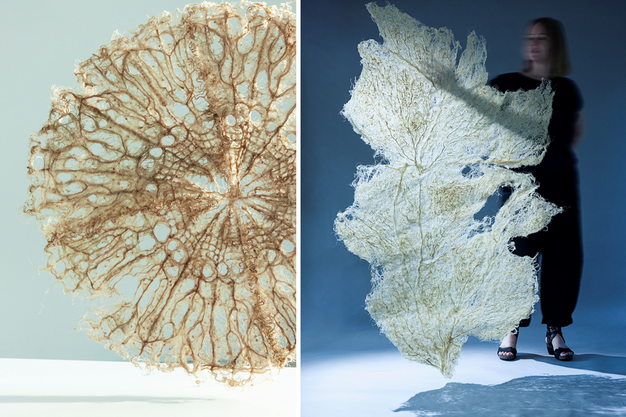 Artworks (Photo credits: Rootfull)
Artworks (Photo credits: Rootfull)
Given the unusual artwork, Zena has seen her army of followers increase over the past year. "People tend to love it and are often interested in the dying process of my works." The colors used in her products are made of a natural base. "It's bio-design in the simplest form, using natural processes to grow new materials. There has never been a better time to grow this as everyone is trying to find alternative materials and or replacing them. The petrochemical (easy, indestructible chemicals) industry has held these developments back for years and thus are behind on innovations."
Unfortunately, petrochemicals are commonly used in synthetic fibers, coatings, and other materials, hindering the development of sustainable alternatives.
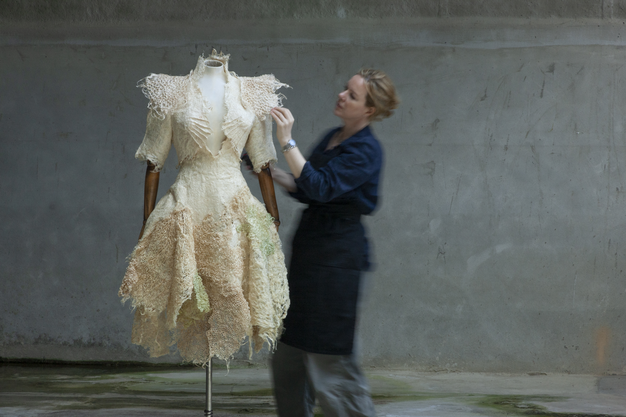
The mats turned into fashion pieces (Photo credits: Rootfull)
Moving away from microplastics
That made Zena think of how to manufacture the product using this material and come up with its functionality. A harmonious blend of expertise, care, and creativity, a large number of fibers and roots have been turned into design pieces, fashion, and jewelry.
According to Zena, numerous consumers aren't aware of the high amounts of plastic incorporated in clothes, such as polyester and nylon, as they have a damaging impact on the environment, which makes it extra relevant for the interior and fashion industry to turn to sustainable alternatives.
"We need to move away from synthetic fibers. All microbe plastics end up in our rivers and seas as a result of synthetic fibers in our clothes. Microplastics damage human cells, and in 80% of human blood samples, microplastics were found." The fashion industry has expressed interest as it offers a great alternative as it's more versatile and easy to grow. Yet, there are about 1100 grass varieties out there to explore their different properties.
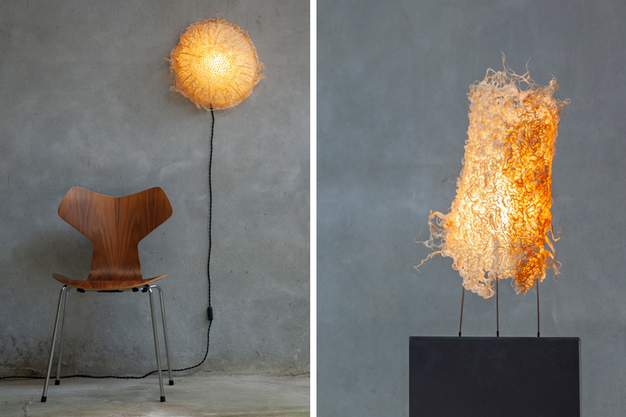
Some of the masterpieces Zena created (Photo credits: Rootfull)
A truly sustainable alternative
Given the lack of awareness, Zena aims to raise attention to the heavy use of petrochemical plastics in the interior industry, such as in furniture upholstery, carpets, and curtains. "Products often carry a sustainability tag on them, but when taking a closer look at the materials and the textiles to build the environment, we have to go back to natural solutions to solve this growing issue."
The roots Zena is using are 100% natural and perfectly suited for the interior industry. Trying to replace the material, Zena would love to collaborate with interior designers who would like to include sustainable alternatives to their offerings. In the immediate future, Rootfull would love to expand its partnerships as currently there's too much to take upon. "The craft is really what I love, and that's the creative side of things. However, it's enough work for three people on its own. Anyone interested in working with me, feel free to reach out."
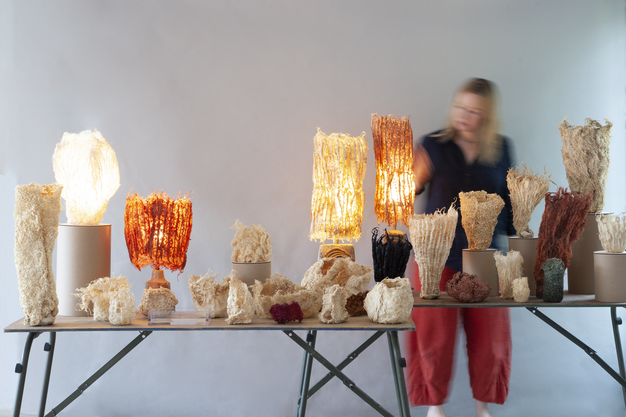
The interior design art (Photo credits: Rootfull)
"Rootfull is actively seeking investors interested in collaborating on the production of organic textiles and finding repurposed uses for excessive waste. By moving away from synthetic textiles, Rootfull offers a sustainable solution using materials that would otherwise end up in landfills."
 For more information:
For more information:
Rootfull
Zena Holloway, Founder
info@rootfull.com
www.rootfull.com
www.instagram.com/rootfull
